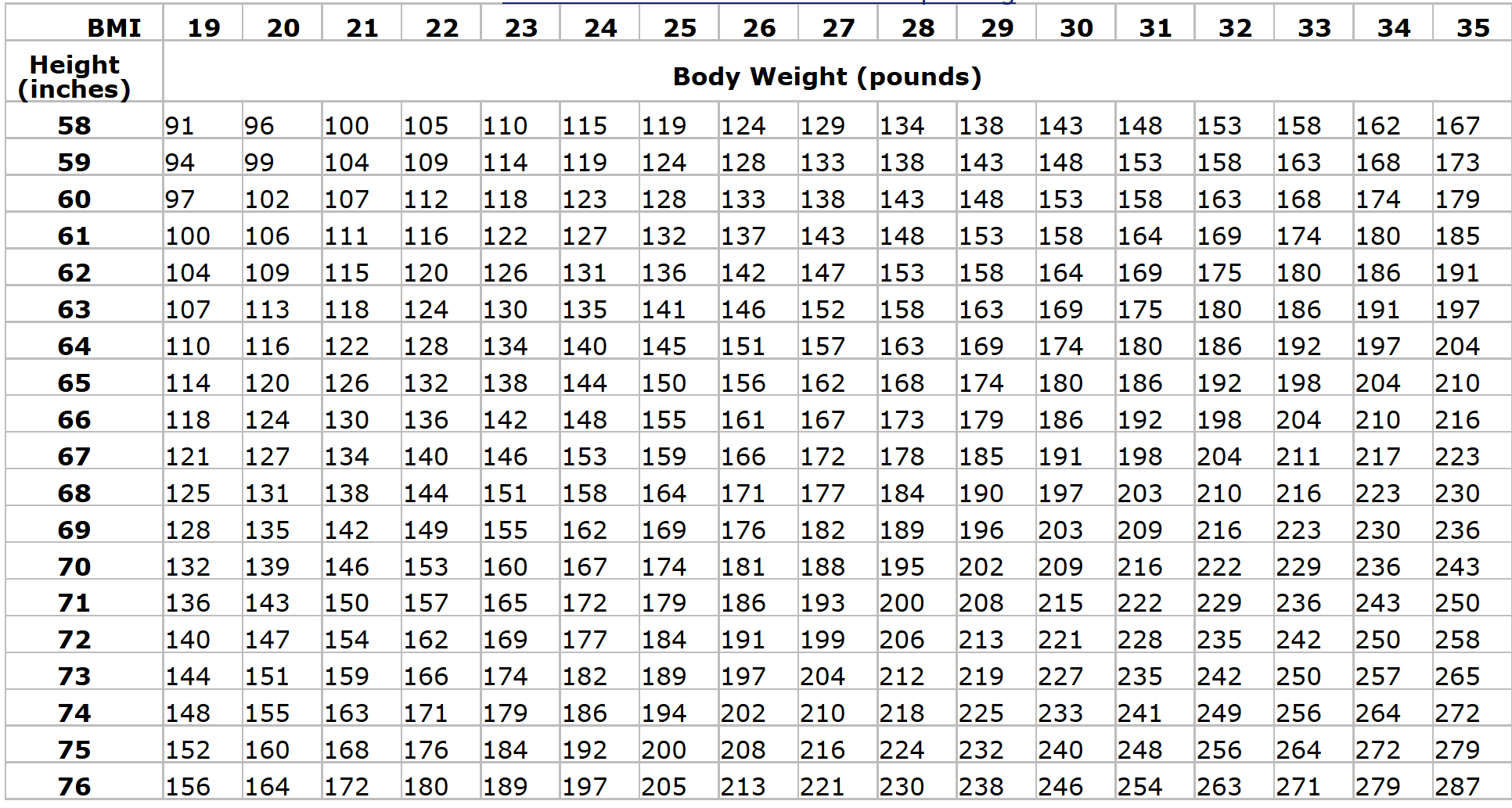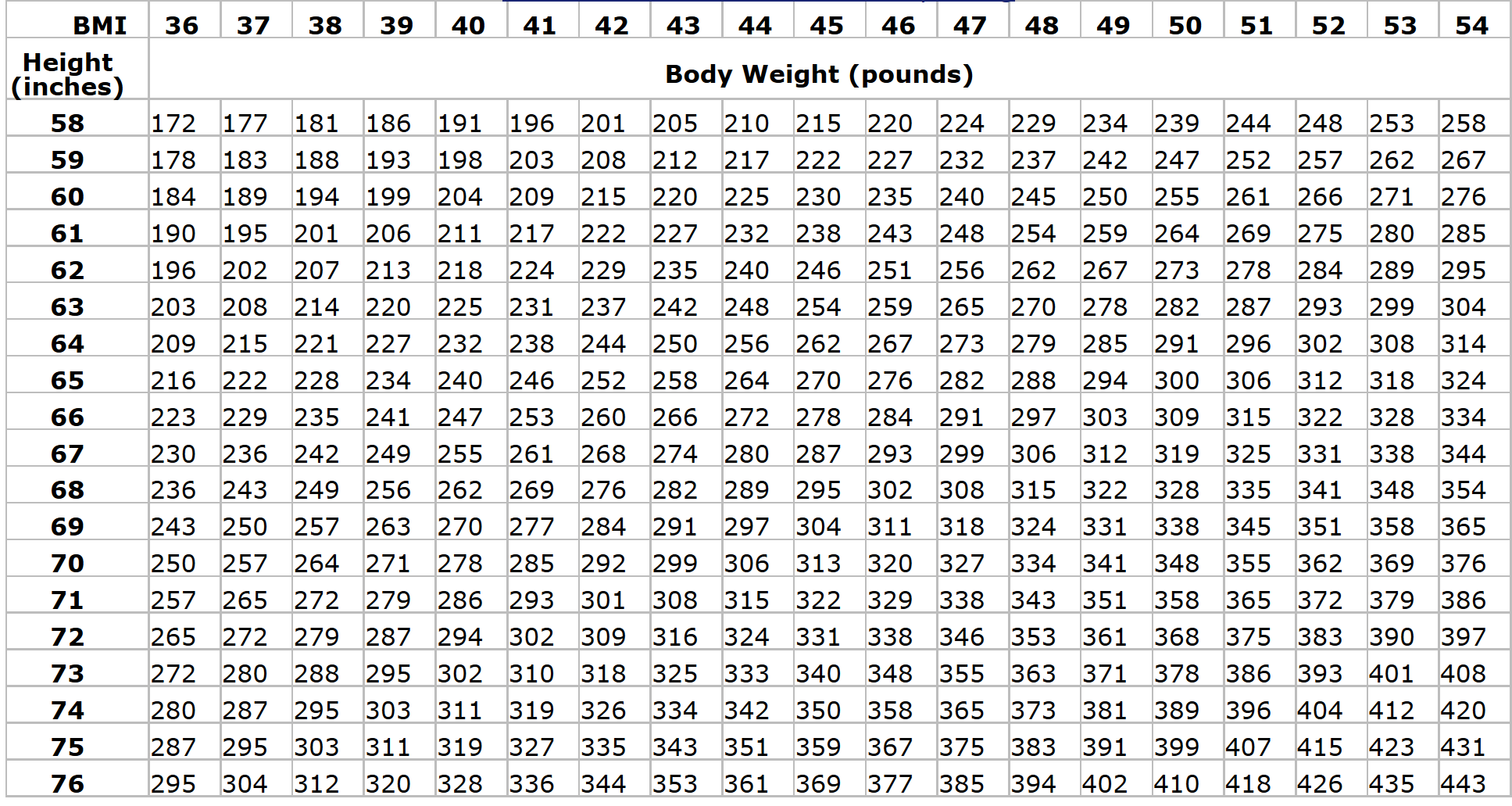An increased amount of body fat can potentially lead to weight-related diseases and other health issues. The body-mass index (BMI) and waist circumference are two measures that can be used as self-screening tools to estimate your weight status in relation to potential disease risk. However, they are not diagnostic tools for disease risks, which should be done by a trained healthcare provider.
How do You Measure and Interpret Weight Status?
Body Mass Index (BMI) is a person’s weight in kilograms or pounds divided by the square of height in meters or inches. A high BMI can be an indicator of high body fatness and having a low BMI can be an indicator of having too low body fatness. BMI can be used as a screening tool but is not diagnostic of the body fatness or health of an individual. As a general rule, many people have an average body-fat level of 20-22. Some athletes have are as low as 3%; this level, for extended periods, is unhealthy.

When your weight is higher than what is considered a healthy weight for a given height you would be described as overweight/obese. Likewise, weight that is lower than what is considered as healthy for a given height is described as underweight. At an individual level, BMI can be used as a screening tool but is not a diagnostic of the body fatness or health of an individual.
Both height and weight must be measured to determine BMI. It is generally more accurate to measure height in meters and weight in kilograms. However, the BMI formula below has been adapted for height measured in inches and weight measured in pounds. These measurements can be taken at home using a tape measure or yard stick and scale. Let’s get started with a basic measurement.
(A) Weigh and Measure Yourself to Calculate Your Body Mass Index (BMI)
1. Weigh yourself on your scale (the measurement is assumed to be in pounds).
2. Measure your height in inches utilizing the yardstick or measuring tape. Stand against a wall or door and utilize a pencil to make an imprint at the highest point at the place on your head, then take a measurement.
(B) Evaluating Your BMI to Calculate Your Body Mass Index (BMI)
3. The actual formula for BMI is simple: BMI = (Body Weight/Height^2) x 703. Remember, weight is in pounds and height is in inches. You can get good experience calculating the BMI yourself using the example given next or simply utilize your height and weight measurement and select your BMI from the charts below. To calculate BMI by hand, take your pencil, paper, and calculator to perform the following BMI computation.
4. Take your height in inches and square the number. As an example, you measured 60 inches (5 feet) so, 60^2=3600. This is known as your height in inches squared.
5. Divide your weight in pounds by inches squared. Suppose you weigh 130 pounds then, 130/3600 = 0.036.
6. Multiply that answer (0.036) by the change factor of 703 so, 0.036 x 703 = 25.4. This number is your BMI.
You will note that if you simply used the chart below that indeed what you calculated coincides for someone 5 feet tall (row 3) and 130 lbs (between columns 9 and 10).


(C) Results to Calculate Your Body Mass Index (BMI)
7. Compare your individual BMI result against the following scale:
• If your BMI is less than 18.5, it falls within the underweight range.
• BMI 18.5 to 24.9 is within the normal or Healthy Weight range.
• BMI 25.0 to 29.9 falls within the overweight range.
• BMI of 30.0 or more is within the obese range.
Maintaining a healthy weight is perhaps one of the best steps you can take to ideal well-being and long life.
Precautions
• The BMI is a good indicator for the normal individual from ages 25 to 65 but, has its restrictions. It does not consider the majority or your general body type/shape.
• Recent research has observed that your waist to hip ratio gives an improved indicator than BMI of whether an individual has a lot of body fat. If you use the waist to hip ratio, you should be under 0.9 for men and 0.8 for ladies. Higher ratios show an expanded danger of stroke, diabetes, and heart problems.
• Also note that excessive abdominal fat may be serious because it places you at greater risk for developing obesity-related conditions, such as Type 2 Diabetes, high blood pressure, and coronary artery disease.
Your waistline may be telling you that you have a higher risk of developing obesity-related conditions if you are:
A man whose waist circumference is more than 40 inches or,
A non-pregnant woman whose waist circumference is more than 35 inches.






